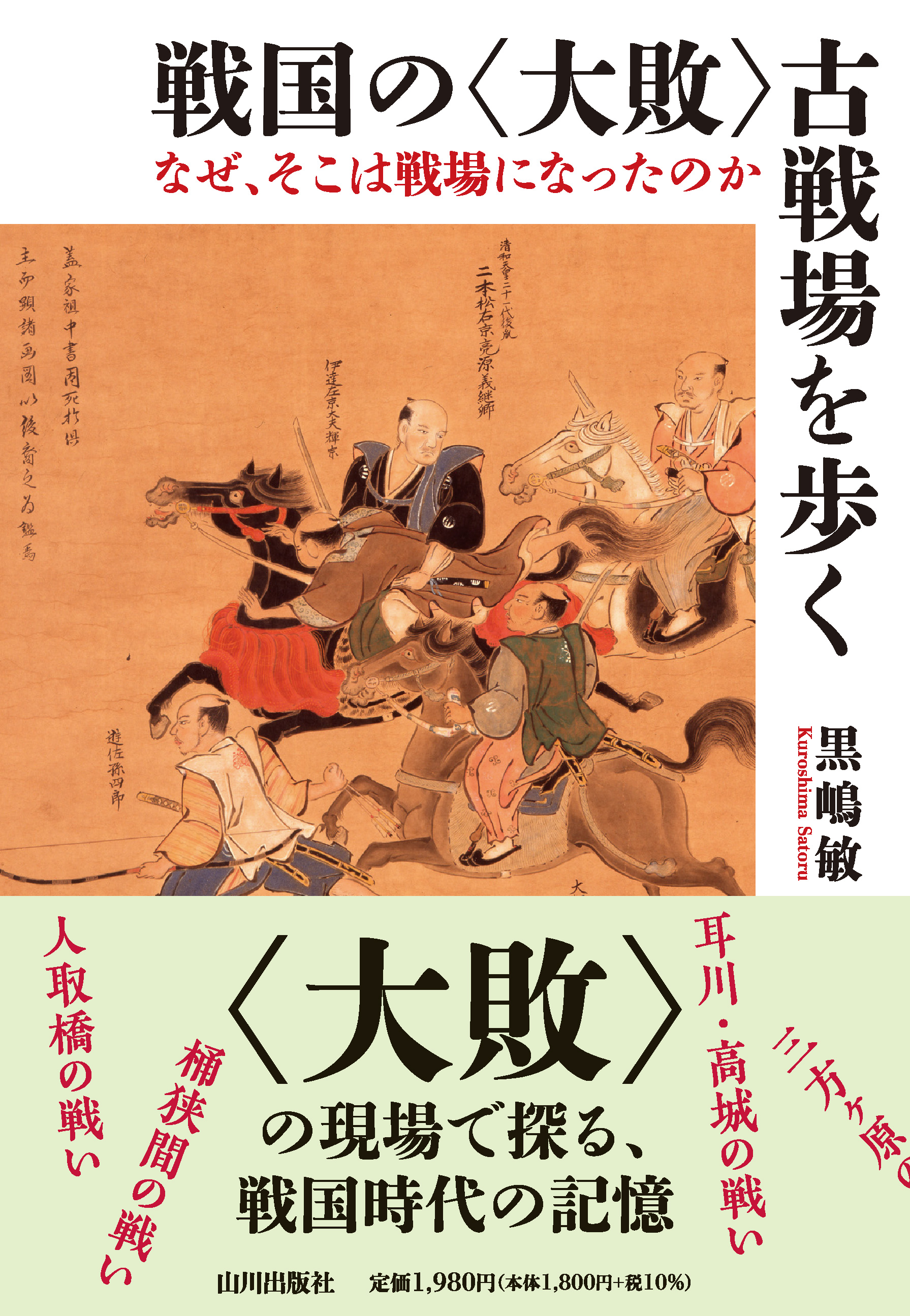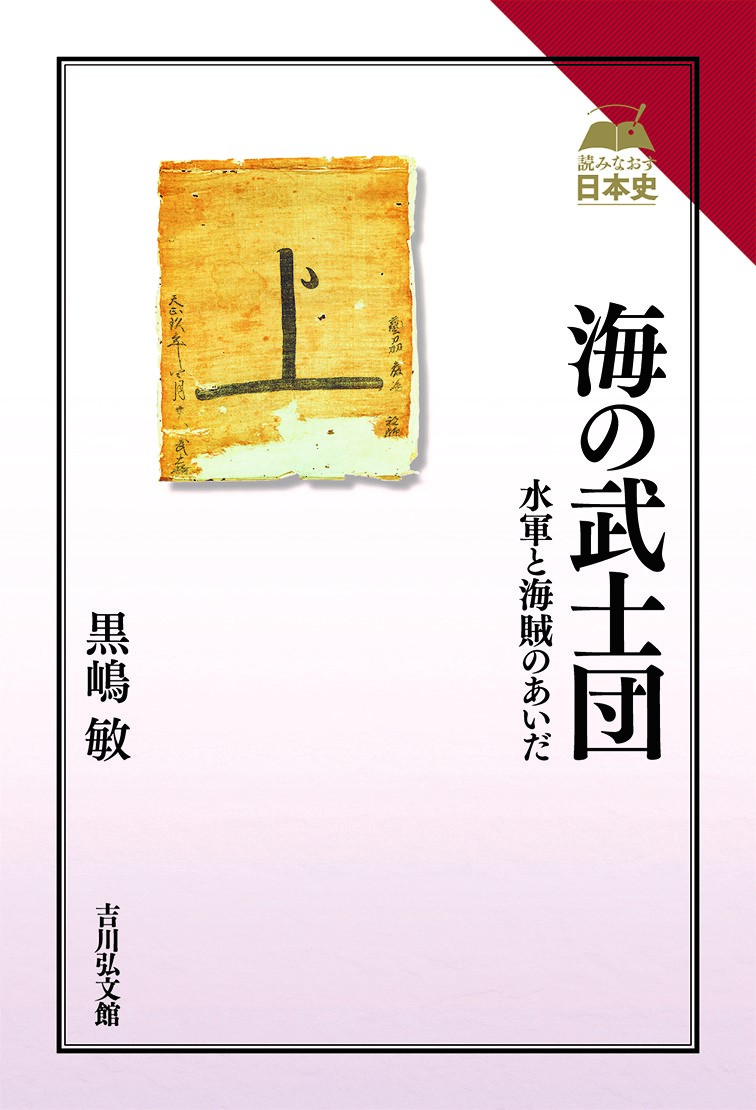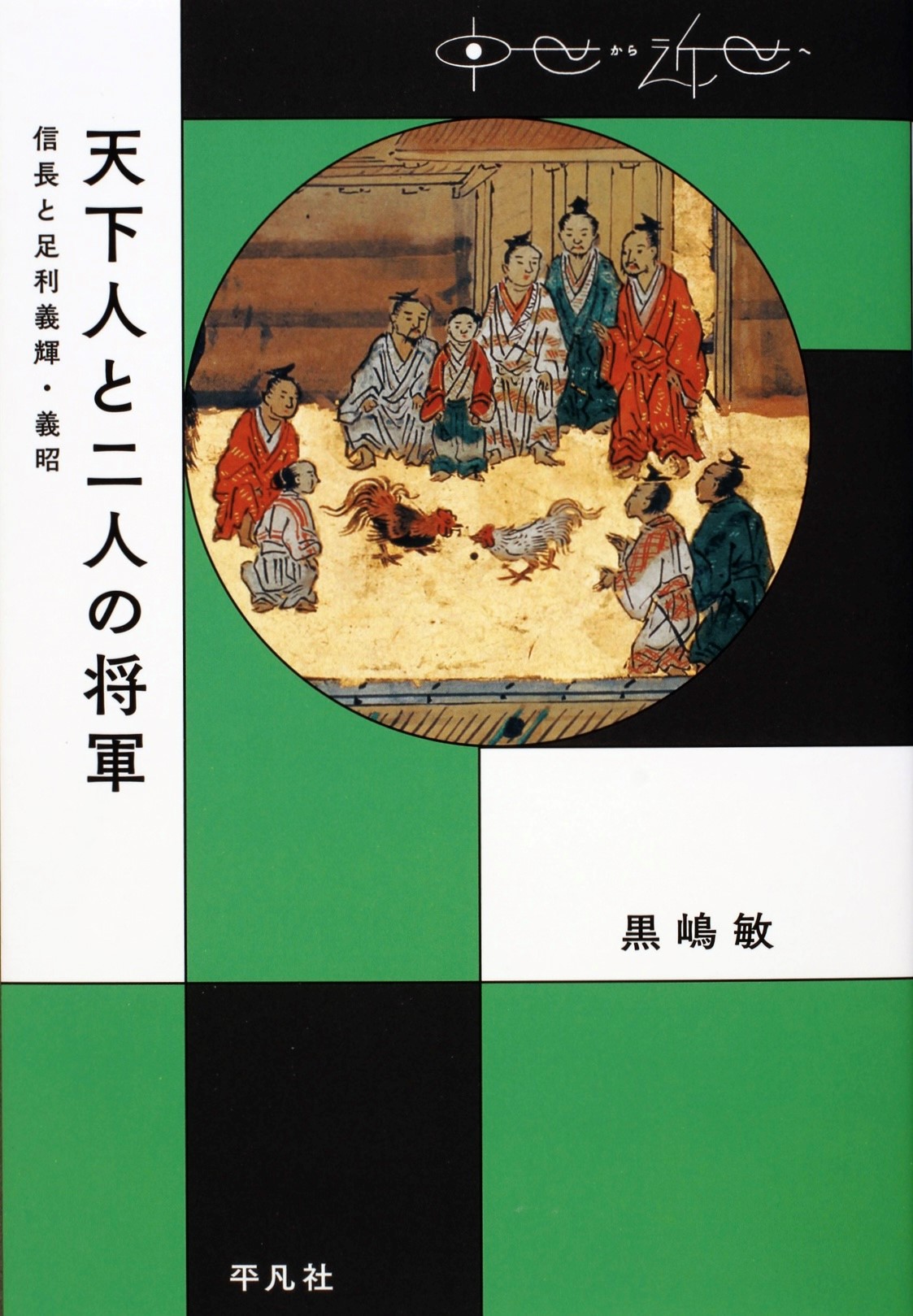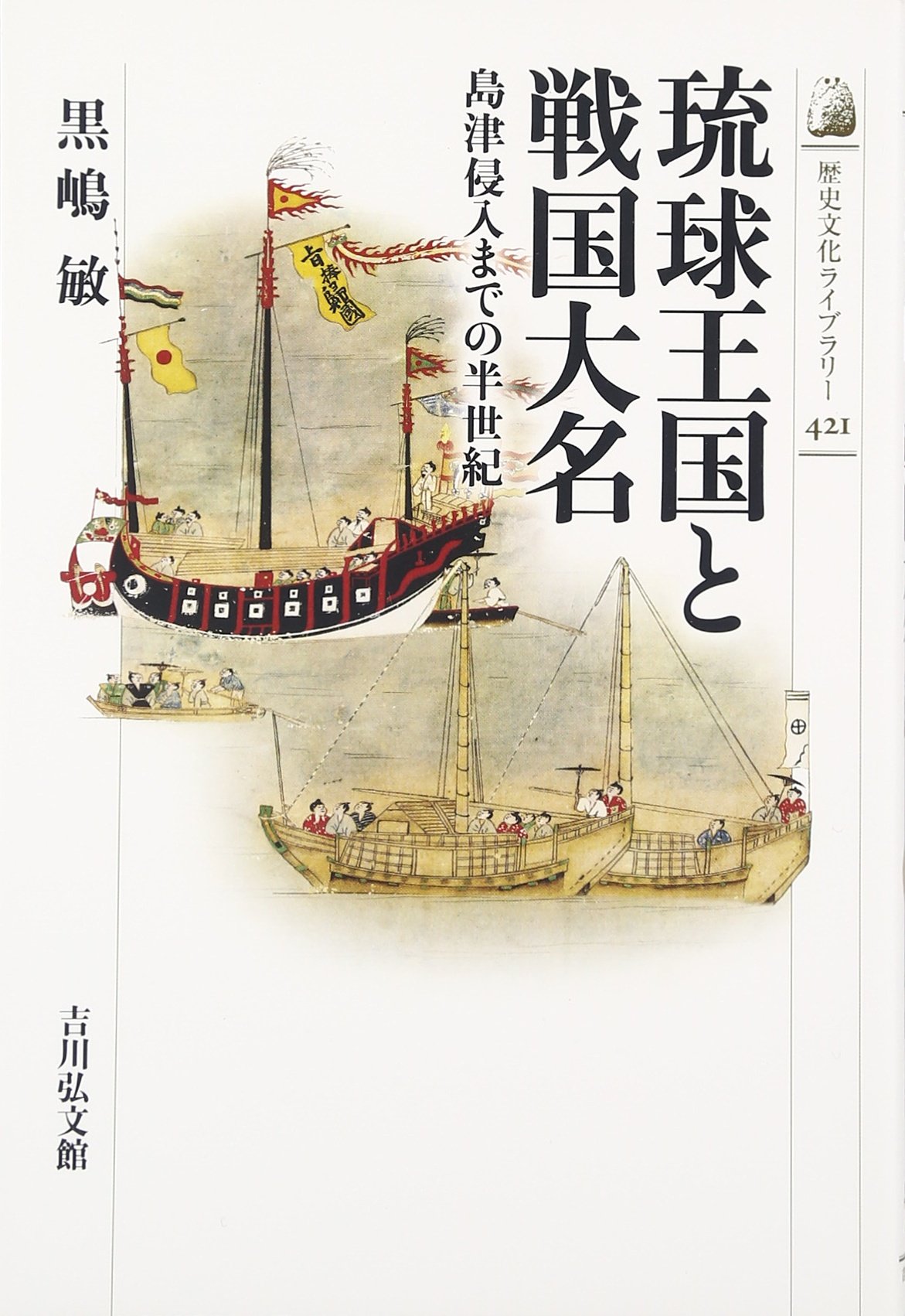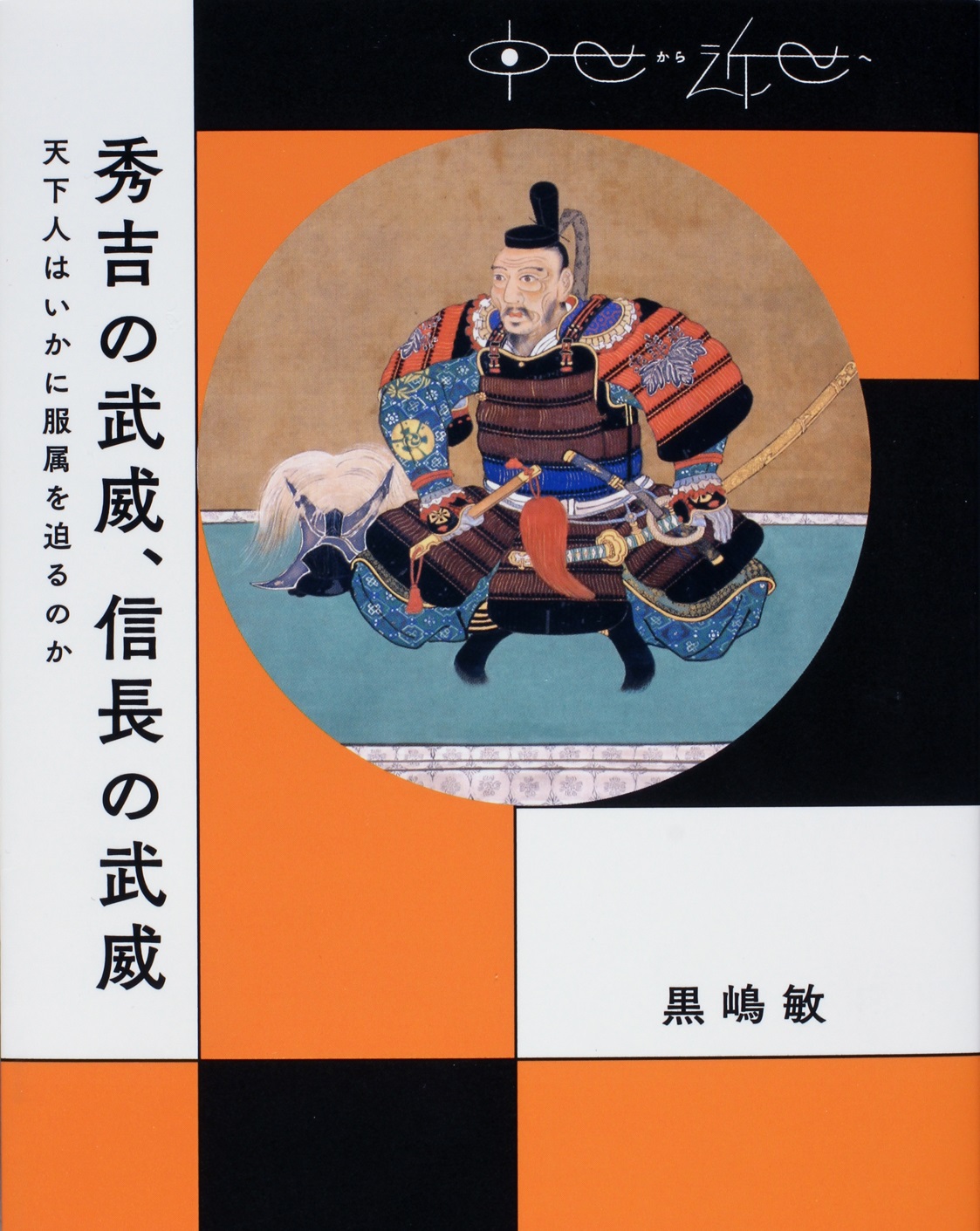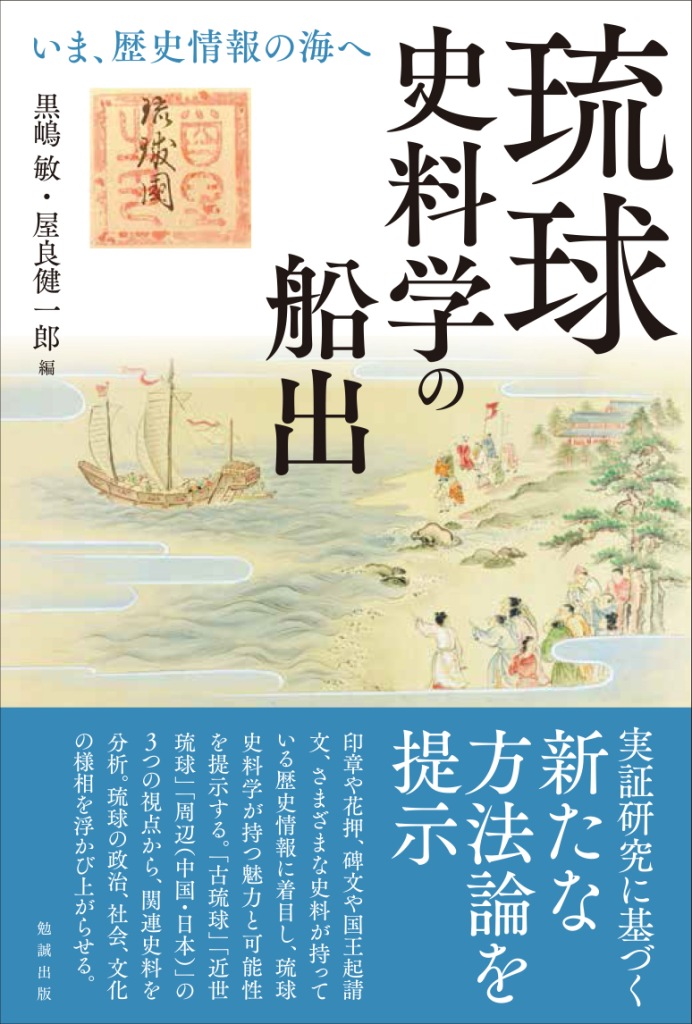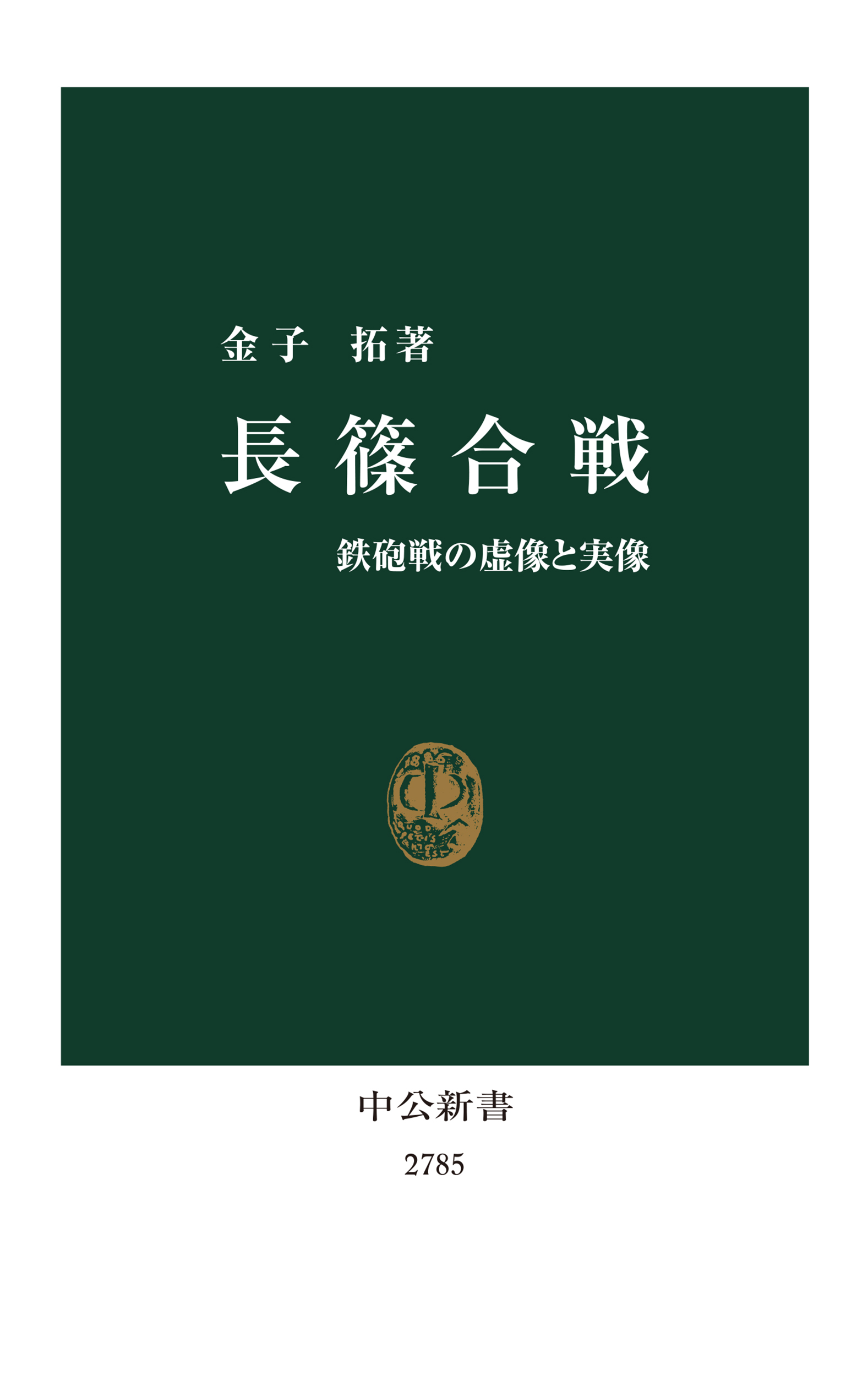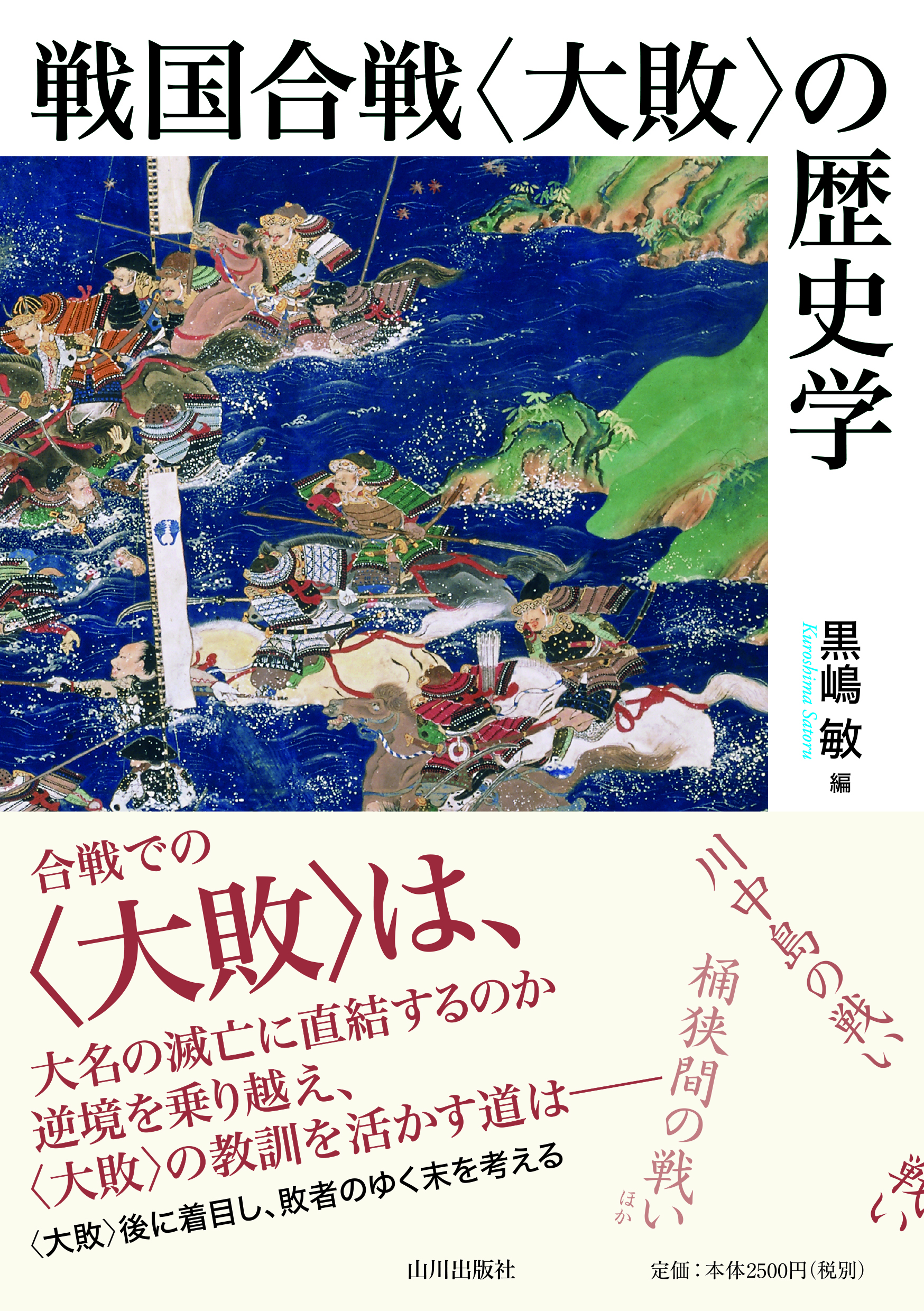
Title
Sengoku-Kassen “Taihai” no Rekishi-gaku (The Historical Study of “Crushing Defeats” in Battles of the Sengoku Period)
Size
296 pages, A5 format
Language
Japanese
Released
May, 2019
ISBN
978-4-634-59115-8
Published by
Yamakawa Shuppansha
Book Info
See Book Availability at Library
Japanese Page
The Sengoku period in Japanese history was a time of continuous fighting throughout the land. Among the conflicts large and small, large-scale conflicts became full-scale battles in which daimyō and so on led their troops and confronted each other on the battlefield. But what happened to a daimyō and his domain if he was defeated in battle?
Many books about the Sengoku period state, for example, that “so-and-so, having suffered a crushing defeat at such-and-such a battle, was subsequently deserted by his retainers and went into decline.” One imagines that if a general suffered a crushing defeat, he would inevitably meet with a miserable end and his domain would go to ruin. But in reality it was rare in battles at the time for one side to win an overwhelming victory, and even if a daimyō did suffer a crushing defeat, it was more often the case that this did not directly lead to the daimyō family’s ruin. This being the case, there is a need to reconsider the general image of a leader who, having “suffered a crushing defeat at such-and-such a battle,” went “into decline” and to reexamine the influence of such “crushing defeats” by means of the evidential methods of historical research.
What would happen if one were to examine the influence of “crushing defeats” logically and dispassionately on the basis of reliable historical sources and by extracting as much historical information as possible from these sources? This book, grounded in an interest in this question, consists of nine essays about nine instances in which a daimyō’s domain continued to exist even after he had suffered a crushing defeat, and they were each written by a researcher qualified to deal with the case in question.
The battles of Okehazama, Nagashino, Kawanakajima, and Mikatagahara are all famous battles in Japanese history, and their influence on the defeated side was varied. There were cases in which the defeated side underwent significant material changes because members of the daimyō’s forces, including either the daimyō himself or his retainers, were killed in action, but there were also cases in which the daimyō continued to wage war in an attempt to overcome the shock of defeat. It could be said that in either case a decline associated with their defeat was not especially noticeable when the daimyō acted proactively.
What we need to pay attention to is rather the fact that various historical perceptions were in later times superimposed on these defeats. Both the families who were victorious and were able to survive into the subsequent Edo period and the families who fell into ruin gave context to these defeats from their respective positions and continued to speak of them. In addition, the inhabitants of former battle grounds, who bore the responsibility of consoling the spirits of those who had been killed, continued to relate the history of these defeats from yet another different perspective. In the course of coming to grips with the extant sources by means of the methods of historical research, the task of peeling away the veil of these subsequent historical perceptions, one layer at a time, is indispensable.
The phrase “crushing defeat” has a strong impact. But it turns out that, hidden in the shadows of this impact, there exist many issues worth considering that have until now been neglected in evidential research. Behind the image that we feel we have understood by using the expression “crushing defeat,” there lie buried leads for thinking about the Sengoku period.
(Written by KUROSHIMA Satoru, Associate Professor, Historiographical Institute / 2021)



 Find a book
Find a book


